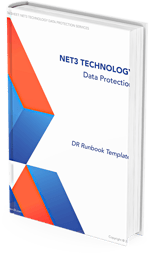In today’s digital-first world, data is the heartbeat of your business. Whether you’re managing invoices, customer details, or critical applications, protecting that data isn’t just an IT concern — it’s a business imperative.
As we head into 2025, cloud computing continues to be at the forefront of technological innovation. With businesses across industries increasingly relying on cloud technologies to drive digital transformation, the landscape is evolving faster than ever. But as these innovations unfold, one thing remains constant: the importance of data security and accessibility. In a world of multi-cloud strategies, AI-driven services, and edge computing, businesses must ensure that their cloud environments are secure and critical data is always accessible when needed.
The reality is that while Microsoft provides infrastructure resilience, data protection remains your responsibility. And without third-party backup, sensitive business data such as emails or shared files stored in Microsoft 365 are not protected from the most common or most serious data loss issues, such as accidental deletions, malware attacks and more.
Data protection is an essential aspect of running a business. With the increasing complexity of technology and the ever-growing amount of data, it's becoming more challenging for companies or IT teams to manage it independently.
 Data security has always been at the forefront of a business, but with the latest, not to mention drastic, uptick in security breaches, it's more important than ever. Testing data security and data recovery is HUGE for a business. Testing your disaster recovery plan helps determine the critical, business functions as well as the importance, and impact, those functions have on the business. Testing can expose the losses a business will retain when any of those functions are interrupted, or worse, halted. It's important to know the best practices of security testing, but equally important, is having a plan in the event a breach occurs. Hence the introduction of the Disaster Recovery Runbook.
Data security has always been at the forefront of a business, but with the latest, not to mention drastic, uptick in security breaches, it's more important than ever. Testing data security and data recovery is HUGE for a business. Testing your disaster recovery plan helps determine the critical, business functions as well as the importance, and impact, those functions have on the business. Testing can expose the losses a business will retain when any of those functions are interrupted, or worse, halted. It's important to know the best practices of security testing, but equally important, is having a plan in the event a breach occurs. Hence the introduction of the Disaster Recovery Runbook.

.png?width=800&name=New%20Cloud%20Computing%20Trends%20for%202025%20(1).png)



